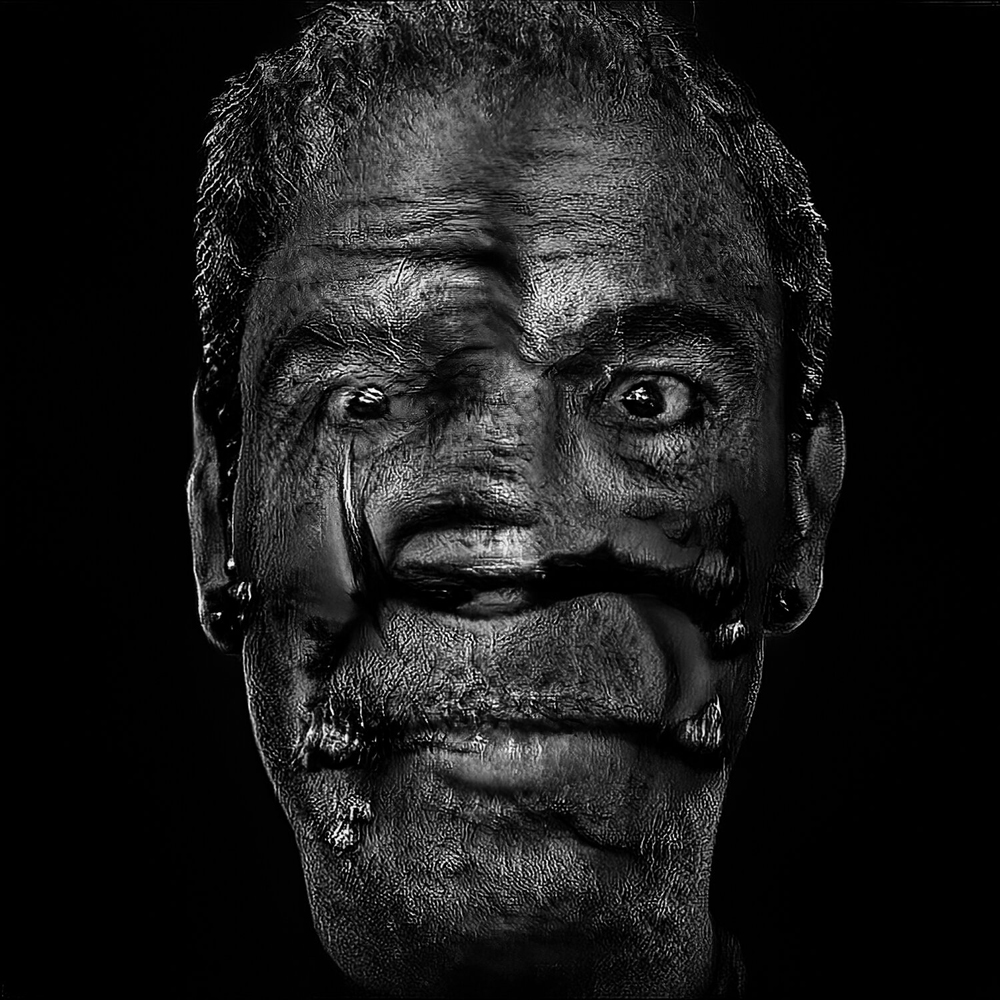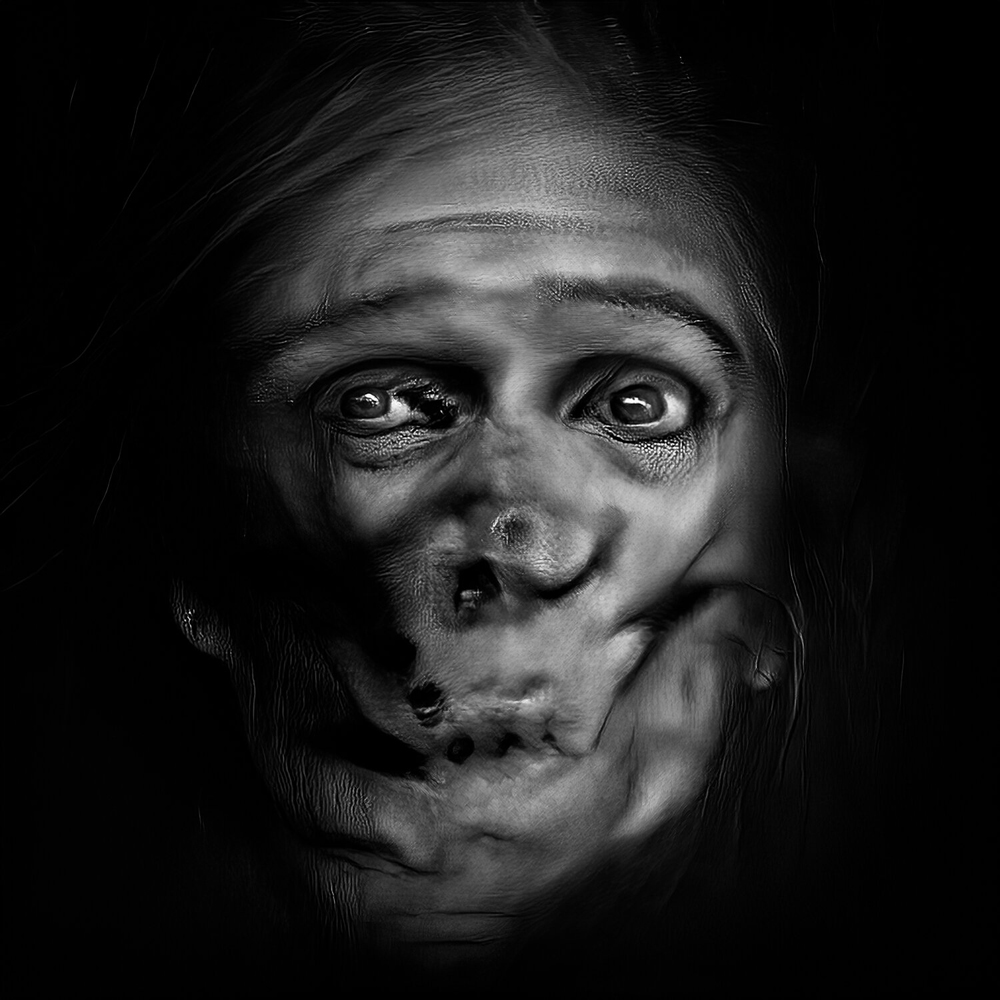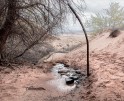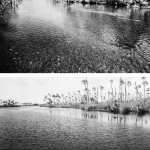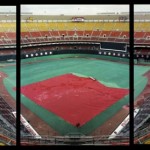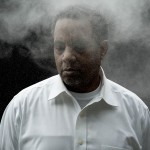Rashed Haq: Art + Science Award – First Place
In the Lenscratch call Art + Science Award: The Heart of the Matter, we asked photographers to consider a shifting perspective of our current world, placing emphasis on the most pertinent themes that reside throughout the boundaries of art and science. Due to the superlative quality of the submissions, it was challenging to narrow down from 137 portfolios to seven final selections.
This week in Lenscratch, we look at the seven winning artists who use photography to investigate themes emphasizing the impact of emotional, physiological and environmental forces upon individuals and societies. Some projects shed light on dualities like beauty and fear or human rights and authority, while others resonate with a singular vision.
In a broad sense, each of the winning artists submitted a series of photographs that makes the invisible visible. From the questioned intentions surrounding surveillance to the exposure of transitioning fungi, these works share interwoven threads with the current frenetic stillness of our world.
Linda Alterwitz and Patrick Duffy
“For us to effectively shape the future of technology, to make technology into an environment that is habitable for us, we need to study the anthropology of technology and understand it – and research, philosophy and art can help guide us.”
Rashed Haq
Rashed Haq is a Bangladeshi-American artist, scientist and technologist. His integrated career offers him a unique perspective on the co-evolution of humans and technology and its global impact. Technology advances human life on many broad levels, including health, education and the means for communication.
With the positive aspects of technology, there are also negative and unintended consequences, especially within the hidden facets of artificial intelligence. In Rashed Haq’s photography series Human Trials, he sheds light on artificial intelligence and its potential to not only shape but distort our lives.
We live in a world of ubiquitous networked communication and generate a tremendous amount of data as many of our interactions are digitized from shopping and entertainment to socializing and medical diagnosis. Algorithms sift this data to make sense of who we are, and assign to us a gender, ethnicity, age, sexual orientation, education level, class, marital status, status as parent, reliability as an employee, citizenship, locations frequented, entertainment preference, shopping preference, and depending on who is doing the assignment, identification as a terrorist. The invisible algorithmic categorization is used to shape our lives, often without us knowing. These can come in the form of what we can easily see or buy through personalization or recommendation engines, or they come in the form of decision engines such as whether we should be called for the job interview, or if we should be fired for low productivity, or whether our mortgage loan application will be approved. Often the underlying data and the algorithm are generating distorted views of their subjects – because the data and the algorithm can be incomplete, inaccurate or biased. In this project I visualize this distortion based on possible portraits of people who do not exist, created using artificial intelligence that is retrained on a set of my photographs produced in the studio using light painting.
Rashed Haq learned photography in the darkroom in Rochester, NY and was trained as a mathematical physicist, going on to do research in quantum cloaking, quantum computing and the physics of black holes. He then worked in Silicon Valley developing innovative applications of artificial intelligence, robotics and advanced analytics. His book “Enterprise AI Transformation” with Wiley Press in 2020. Rashed uses a combination of photography and software algorithms in his artistic practice, many of the techniques leveraged from software engineering. He has recently had over 40 solo and group exhibitions across North America, and his work is in various private and corporate collections. He won the COMPAS photography award from Oxford University, and received honorable mention for the Carol Crow Fellowship at the Houston Center for Photography. A selection of his photographs were published by the “Center for American Architecture and Design”.
Linda Alterwitz a visual artist whose artwork engages photography, collage and interactive installations. Her projects focus on the unseen rhythms of the human body and our relationship to the natural world. Alterwitz’s creative practice has been informed by a fourteen-year exploration of scientific technologies that provide visualizations of our physical and cognitive states.
In 2015, Alterwitz was the recipient of the Nevada Arts Council Visual Artist Fellowship. Her work has been published in Smithsonian Magazine, Orion Magazine, The New Statesman, Musee Magazine among others. She has exhibited her work in both traditional exhibition and site-specific installations in the United States, United Kingdom, Japan, China, Spain, Israel, Germany, Greece and Poland. Alterwitz lives and works in Las Vegas, Nevada.
Patrick C. Duffy melds a love for art, giving and entrepreneurship in a state he calls home: Nevada. With his position as President/CEO of Nevada School of the Arts, Duffy spends much of his non-working hours promoting Arts & Culture in the Las Vegas & Reno communities and several out-of-state philanthropic efforts. Having built a long-standing and respected professional sales and marketing career in fine jewelry and hospitality, Patrick Duffy motivates and mentors’ artists, colleagues and customers, and can address and engage public audiences on a variety of best-practice topics including: Priceless Customer Service; Have to/Want to; and the Five Pillars of Life.
Duffy’s passion and commitment for the arts, complete with gifts placed in museums from London, New York, Chicago and Washington D.C. to Las Vegas, Reno, Bloomington, Santa Fe, San Francisco and Honolulu, have garnered both national and international recognition for his philanthropic efforts to the arts. His sense of artistic acumen coupled with a keen eye for museum quality art is reflected in the Goodman Duffy Collection. The legacy of the Goodman Duffy Collection is currently part of the Smithsonian Institute, Archives of American Art.
Duffy has served on the Board of Directors and Executive Committee at The Smith Center for the Performing Arts; former Vice Chairman of The NEON Museum; and curator of The Odyssey: A Visual Art Experience for the annual Life Is Beautiful festival in Downtown Las Vegas. As President of the Las Vegas Art Museum (LVAM), Duffy constructed a relationship (MOU) between the museum and the University of Nevada, Las Vegas–Barrick Museum of Arts to preserve the integrity of the LVAM collection. Additionally, as a former member of the Foundation Board of Directors for Opportunity Village, Duffy took a steering role in developing the Opportunity Village Art and Enrichment program and previously served as the appointed Arts Commissioner for the City of Las Vegas.
An accomplished motivational speaker, Duffy has been featured on global stages for his business experience, and locally; at Leadership Las Vegas on Art and Culture, and as an Inspire speaker at ‘Delivering Happiness Inspire!’ sponsored by Zappos.
Patrick Duffy is a dynamic leader who enjoys seeking the very best in every relationship, both professional and personal. Duffy resides in Las Vegas with his husband Luis, where they both continue to collect, and support the arts in both the US, Europe and Mexico.
Posts on Lenscratch may not be reproduced without the permission of the Lenscratch staff and the photographer.
Recommended
-
Torrance York: Art + Science Award – Honorable MentionNovember 14th, 2021
-
Alice Hargrave: Art + Science Award – Honorable MentionNovember 13th, 2021
-
Benjamin Dimmitt: Art + Science Award – Honorable MentionNovember 12th, 2021
-
Bremner Benedict: Art + Science Award – Honorable MentionNovember 11th, 2021
-
Rebecca Cummins: Art + Science Award – Third PlaceNovember 10th, 2021



